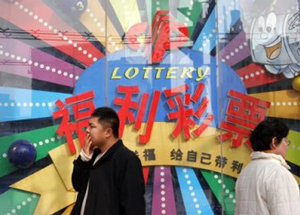Gambling na China
jul25 China lottery
Over the past several years, China’s lottery industry has undergone a dramatic transformation, shaped by the sweeping effects of the COVID-19 pandemic, according to a study by Dr. Chen Haiping, an associate professor at the Faculty of Psychology at Beijing Normal University.
The research, published in this year’s first Global Gaming & Tourism Research book from the Macau Polytechnic University (MPU), presents a detailed analysis of the post-pandemic evolution of the country’s lottery market.
Drawing from official national sales data and demographic research, the study traces the structural, behavioral, and psychological changes that have redefined lottery consumption across the country.
Downturn and recovery
The pandemic’s initial outbreak in early 2020 delivered a sudden and severe blow to the industry. Government-imposed lockdowns and strict public health controls, including the closure of sales outlets and suspension of major sporting events, triggered a precipitous drop in sales.
In February 2020 alone, national lottery sales fell by over 80 percent year-on-year. The impact was the most significant decline recorded since 2008. As the public focused on essentials and avoided public venues, lottery spending—which is typically categorized as leisure or discretionary consumption—plummeted.
However, this decline was short-lived. As China gradually emerged from the height of the pandemic and resumed economic activities, the lottery market experienced a strong and rapid rebound. By mid-2020, sales had not only recovered but were on an accelerated growth trajectory.
By 2024, national lottery revenues had surged to a record RMB709.7 billion ($99 billion), nearly doubling the levels seen prior to the pandemic. This remarkable turnaround, according to Chen, reflects both strategic adaptations by the industry and evolving consumer behavior.
One of the most notable developments has been the reconfiguration of the market’s product structure. The once-prominent video lottery completely disappeared from circulation after authorities approved its termination.
Meanwhile, sports betting products gained unprecedented momentum, with their share of total sales expanding rapidly to rival the combined share of other categories. Instant-win scratch tickets continued their steady rise, although growth appeared to be approaching a plateau.
Traditional lotto-style number games, long the backbone of the market, saw their relative share shrink each year, and Keno-type products, while gaining marginally, ultimately stagnated.
Consumer base changes

The composition of the consumer base also shifted dramatically during this period. Young people have emerged as the dominant demographic, replacing the older and middle-aged buyers who once made up the bulk of lottery players. Data from multiple studies and internal reports indicates that individuals between 18 and 35 years of age now constitute the largest group of lottery consumers.
This shift coincides with the widespread adoption of smartphones, mobile payment systems, and digital lifestyles, which have made it easier for younger generations to access lottery services—even in the absence of formal online ticket sales. The appeal to youth is bolstered by the gamification and entertainment value embedded in many newer lottery formats.
Another striking development is the growing participation of women in the lottery market. Historically, men have accounted for the majority of ticket buyers, but recent research shows that women now represent up to 40 percent of players, and in some regions or product categories—such as instant scratch cards—the figure is even higher. The increase in female participation is closely linked to broader social trends, including greater economic independence and evolving attitudes toward leisure and spending.
In tandem with these trends is the rise of white-collar and higher-income consumers as a significant player segment. Once associated primarily with low- to middle-income earners, lottery buyers now include a large share of office workers, professionals, and highly educated individuals. Surveys show that over 60 percent of purchasers have received higher education, and many earn more than RMB10,000 ($1,395) per month.
For these consumers, the lottery is often seen not just as a chance to win money but as a low-stakes form of entertainment and emotional release amid daily stresses.
Social media platforms have also played a key role in promoting lottery participation as a communal experience. Young people post photos of their tickets, organize group purchases, and even exchange lottery tickets as gifts for birthdays, holidays, or weddings. In certain cities, local lottery offices have embraced this trend, providing scratch-card bouquets for wedding ceremonies and partnering with convenience stores and shopping centers to create immersive, themed sales environments.

The shift in consumer mindset and behavior is also reflected in the retail ecosystem. During the pandemic, when physical access to stores was limited, many consumers turned to indirect online channels—such as chat groups, digital kiosks, or appointment systems—to obtain tickets.
Although online lottery sales remain tightly restricted by law, the industry has made significant strides in enhancing digital engagement through mobile apps, QR code payments, and smart vending machines.
Retail stores, in turn, have undergone rapid transformation. No longer just places to buy tickets, these outlets are becoming hybrid social spaces that combine ticket sales with café-style relaxation areas, themed decor, and interactive experiences. This repositioning has helped attract new customers and revive foot traffic in an increasingly digital world.


Underlying the post-pandemic lottery boom, the study argues, is a broader psychological phenomenon known as the “lipstick effect”. Originally coined in consumer psychology to describe the tendency for people to indulge in small luxuries during economic downturns, this theory holds that when faced with financial uncertainty, individuals may forgo major expenses but continue to spend on inexpensive items that offer momentary pleasure or escapism.
In China, lottery tickets—particularly those with low entry costs and instant outcomes—have served precisely this function. The economic slowdown, coupled with prolonged public health measures, created a fertile ground for this type of compensatory consumption. The lottery, in essence, became a “small hope” investment amid larger uncertainties.
Lottery operators change tactics
In addition to responding to changing consumer behavior, lottery authorities actively encouraged this rebound. The study notes that institutions introduced new ticket formats, expanded point-of-sale locations to high-traffic areas such as shopping malls and transit stations, and launched thematic campaigns tied to health, holidays, and popular culture.
The traditional 2-yuan ($0.14) ticket, a staple for decades, was phased out in favor of higher-priced options, subtly boosting average spending per transaction. Simultaneously, industry stakeholders adopted advanced technologies for monitoring sales behavior, improving customer experience, and providing support services—such as addiction counseling or gamification features that enhance consumer retention.
Looking ahead, Chen emphasizes the importance of aligning regulation, innovation, and consumer protection. While new demographics bring vitality to the market, they also present challenges. The surge in sports betting, for example, raises concerns about potential addiction risks among young users.
Marketing campaigns need to be carefully calibrated to avoid encouraging excessive spending or exploiting vulnerable groups.
At the same time, regulators must strengthen oversight mechanisms, upgrade digital monitoring tools, and promote responsible gambling practices, especially in an era where digital engagement is redefining the boundaries between leisure and risk.
https://agbrief.com/intel/deep-dive/01/07/2025/china-lottery-industry-underwent-considerable-post-pandemic-transformation-research/
Comments
Post a Comment